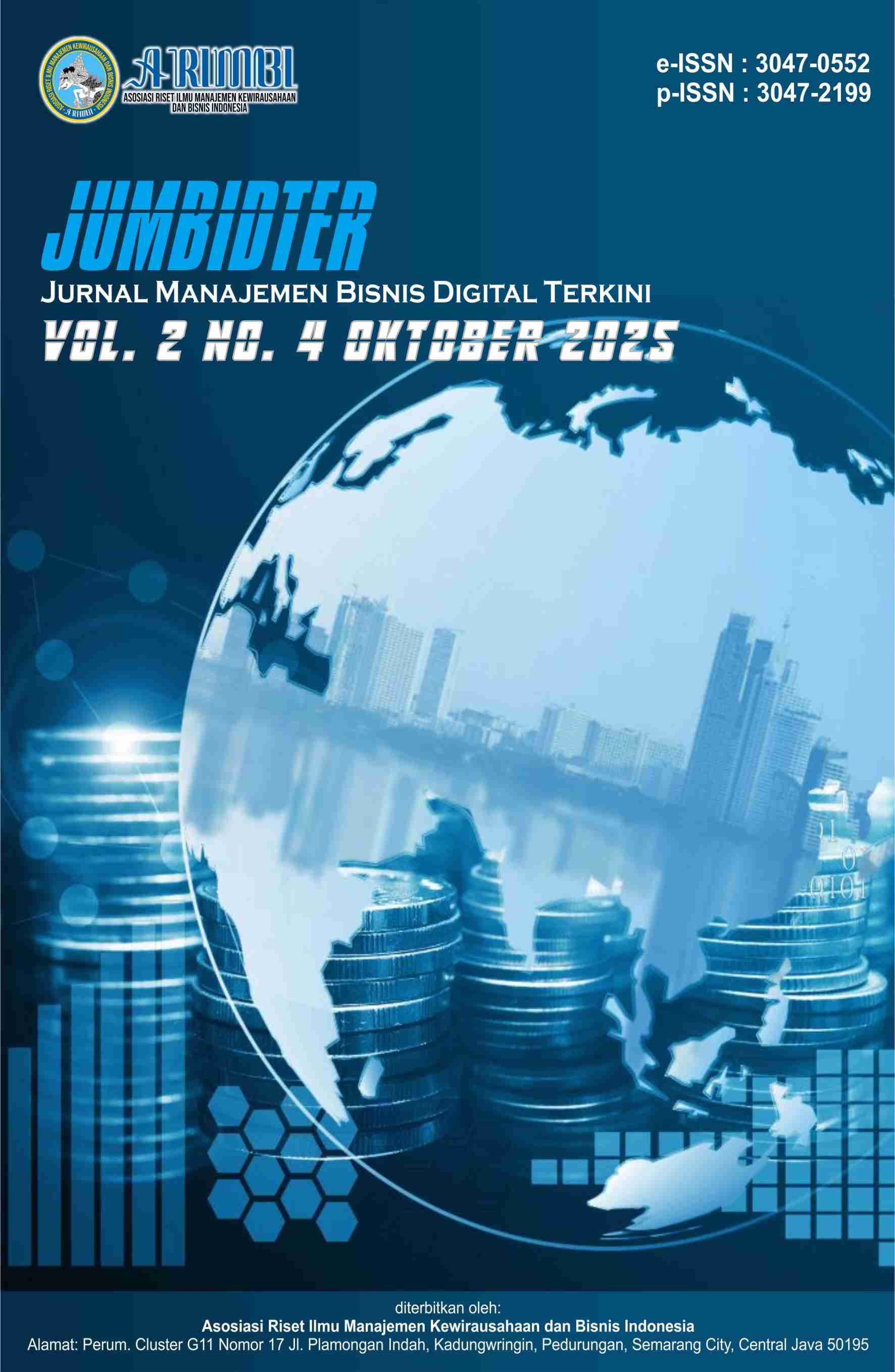Analysis of the Application of Information Technology in Improving the Efficiency of Supply Chain Management at JS Florist Store in Samarinda City
DOI:
https://doi.org/10.61132/jumbidter.v2i4.900Keywords:
Efficiency, Information Technology, Small Business, Supply Chain Management, SWOT AnalysisAbstract
This study aims to analyze the application of information technology in improving the efficiency of supply chain management at JS Store Florist in Samarinda City. This study is motivated by the rapid development of information technology and its role in supporting supply chain management, especially for small-scale businesses. This study uses a qualitative descriptive method with data collection techniques through interviews, observation, document study, and literature study. Data analysis was conducted using the SWOT analysis method. The results showed that the use of information technology can improve supply chain management efficiency, as seen from the savings in operating costs of IDR 1,300,000 per month, or equivalent to 17.21%. This proves that the application of information technology at JS Store Florist is capable of improving the efficiency of supply chain management. The use of marketplaces, digital recording, and online ordering strategies has been proven to accelerate production and distribution, as well as providing recommendations for the development of a more integrated digital ordering system to strengthen competitiveness and business sustainability in the face of increasingly fierce competition in the florist business.
Downloads
References
Bertalanffy, L. von. (1968). General systems theory: Foundations, development, applications. New York: George Braziller.
Bowersox, D. J., Closs, D. J., & Cooper, M. B. (2013). Supply chain logistics management (4th ed.). McGraw-Hill Education.
Chopra, S., & Meindl, P. (2016). Supply chain management: Strategy, planning, and operation (6th ed.). Pearson.
Directorate General of State Assets. (2023). Digital supply chain transformation in Indonesia. Ministry of Finance of the Republic of Indonesia. Retrieved from https://djkn.kemenkeu.go.id
Galbraith, J. R. (1973). Designing complex organizations. Reading, MA: Addison-Wesley.
Heizer, J., & Render, B. (2006). Operations management. Pearson Prentice Hall.
Indrajit, R. E. (2003). Supply chain management: Concepts and applications. Grasindo.
Krajewski, L. J., Ritzman, L. P., & Malhotra, M. K. (2007). Operations management: Processes and value chains (8th ed.). Pearson Education.
Laudon, K. C., & Laudon, J. P. (2014). Management information systems: Managing the digital firm (13th ed.). Pearson.
Laudon, K. C., & Laudon, J. P. (2020). Management information systems: Managing the digital firm (16th ed.). Pearson Education.
Ningsih, S., & Rasyid, M. (2020). The influence of information technology on the performance of small and medium enterprise operations. Indonesian Journal of Management and Business, 6(2), 115–124.
Prabowo, A., Santoso, H., & Lestari, D. (2023). Utilization of enterprise resources planning (ERP), warehouse management system (WMS), and electronic data interchange (EDI) in supply chain management integration. Journal of Information Systems and Management, 11(1), 45–57.
Putri, R., & Santoso, B. (2023). The influence of service quality on customer satisfaction. Journal of Service Management, 8(1), 45–60.
Rahmasari, L. (2011). Supply chain management and company operational performance. Journal of Economics and Business, 10(2), 45–58.
WFFSA, & North Carolina State University. (2023). Annual report: Market analysis and industry trends. Raleigh: North Carolina State University Press.
Downloads
Published
Issue
Section
License
Copyright (c) 2025 Jurnal Manajemen Bisnis Digital Terkini

This work is licensed under a Creative Commons Attribution-ShareAlike 4.0 International License.





